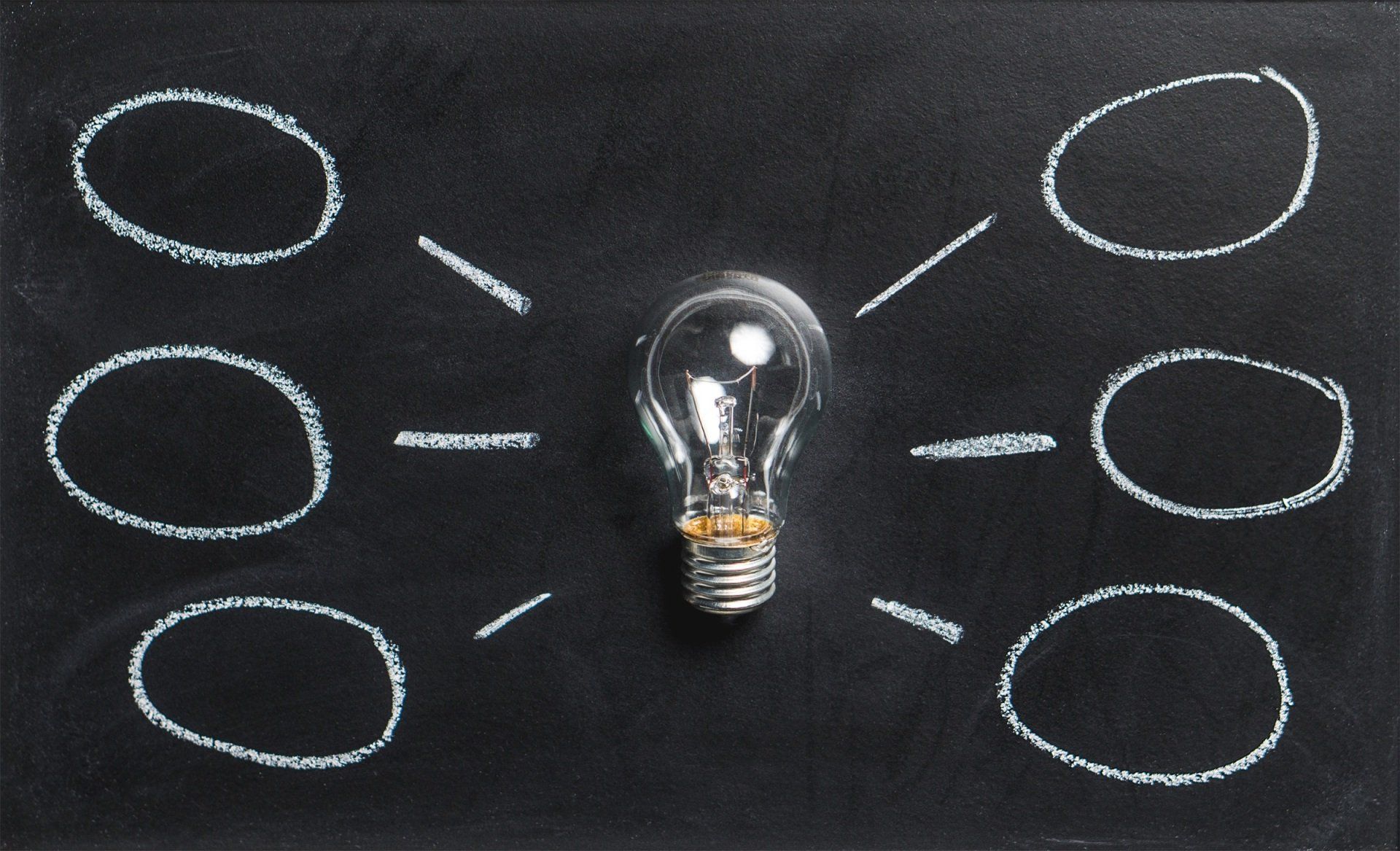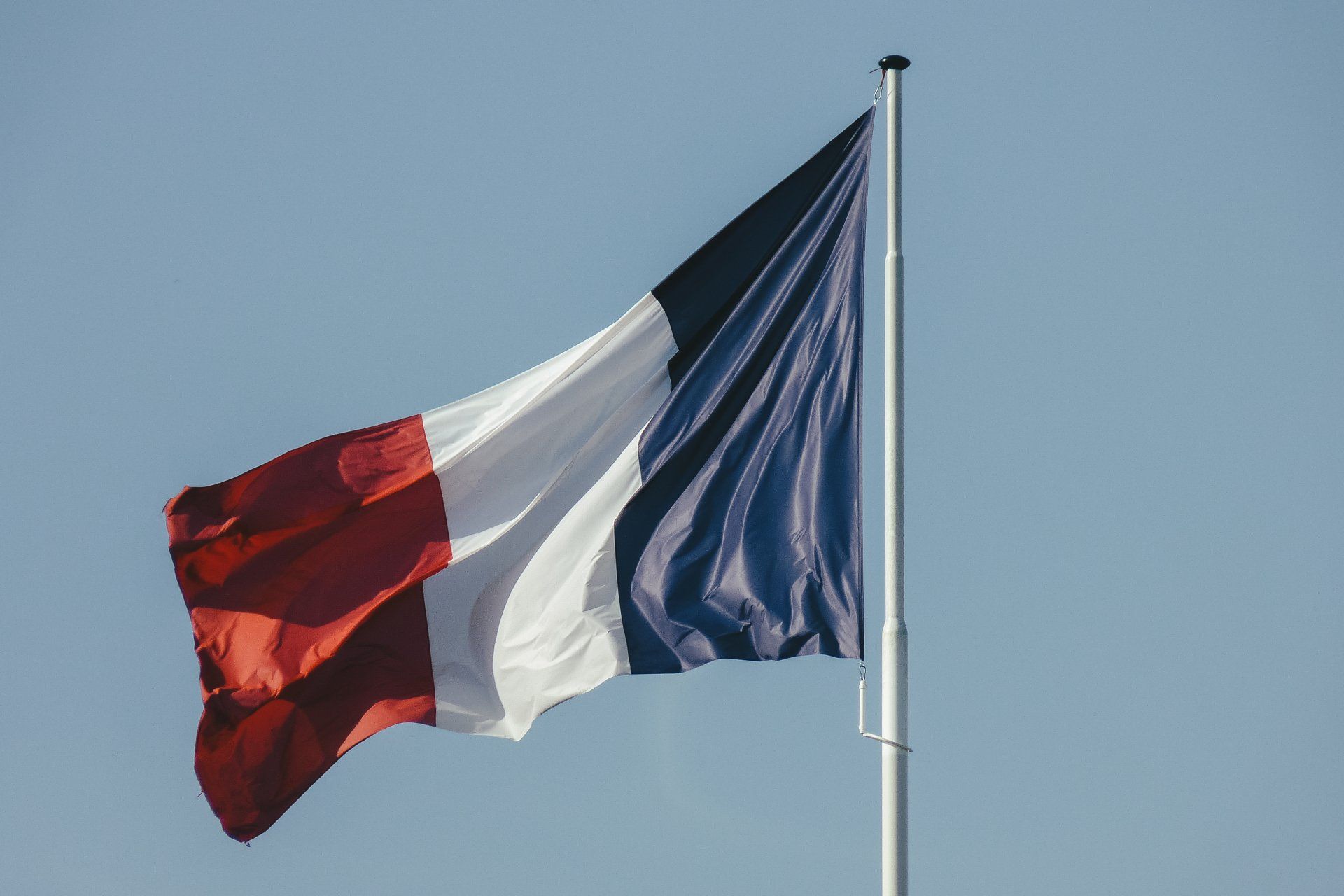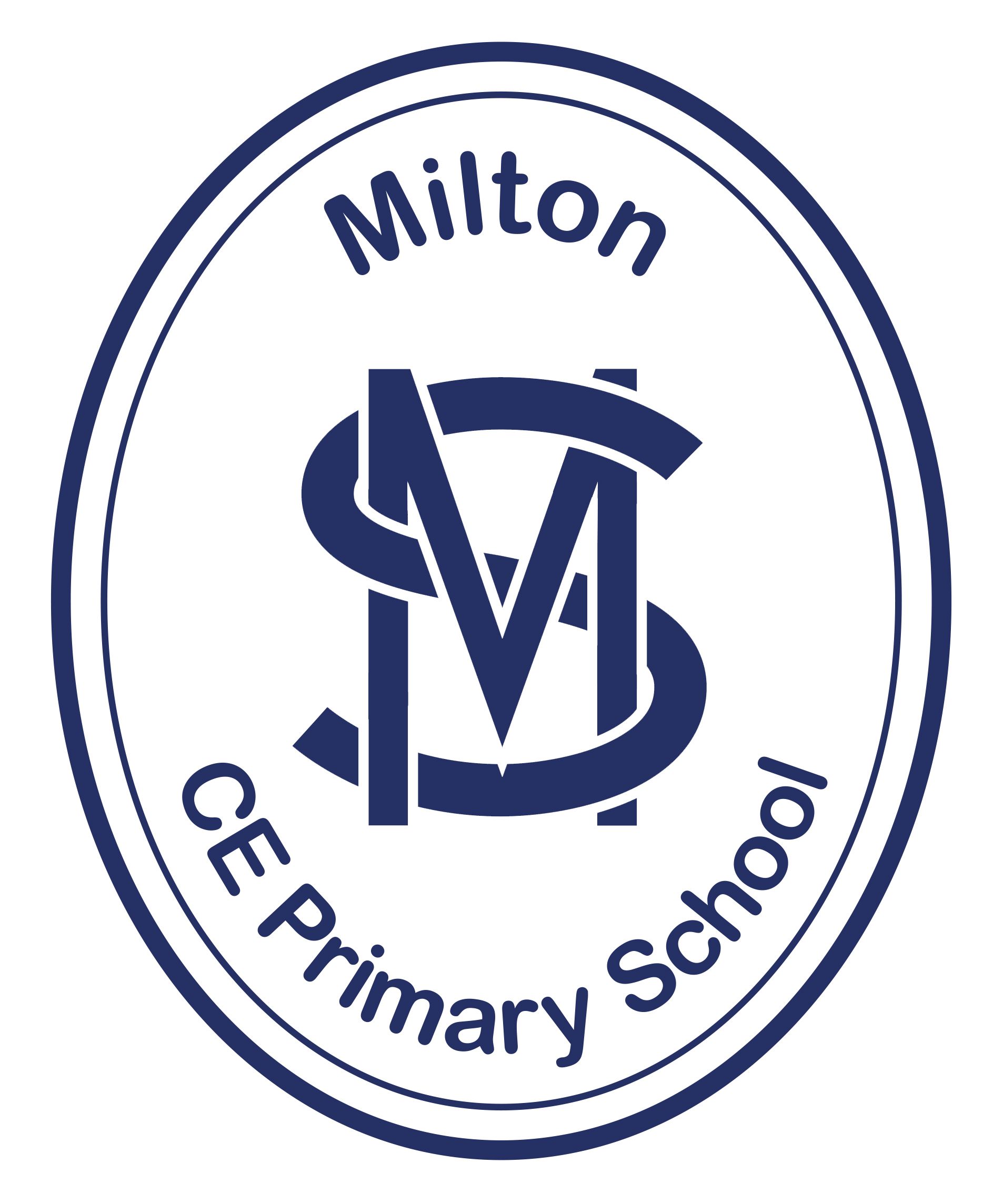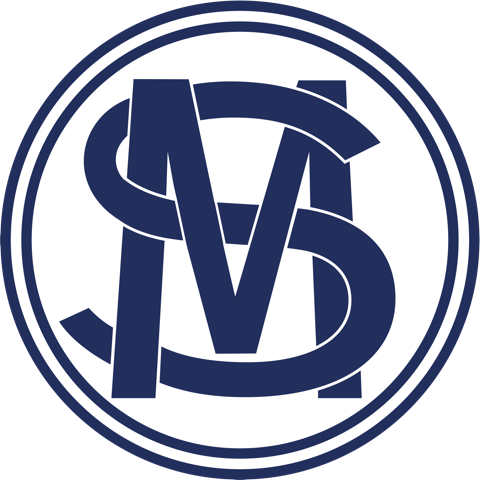
Curriculum
At Milton CofE Primary Academy, we aim for all pupils to be successful learners, confident individuals and responsible citizens.
Intent
At Milton, our knowledge-rich curriculum design is underpinned by the principles that:
• Knowledge is valued and specified
• Knowledge is well sequenced
• Knowledge is taught to be remembered
We aim to equip our learners with the knowledge and skills they need, enabling them to be ambitious about all they can be within their lives, challenge themselves to achieve and celebrate success in a way that demonstrates respect for themselves, their family, their friends, their community and the world within which they live.
Being a church school is important to us and Christian values underpin all that we do within both our learning and social interactions. Our school community is routed in love, friendship and respect where everybody is valued and supported both academically and emotionally. Courage, wisdom, curiosity and perseverance drive our ambitious curriculum and enable all of our learners to thrive and develop a true love for learning during their time with us.
Our staff all share an ambitious vision of what we want our pupils to achieve from our aspirational curriculum and how we can go about achieving this. Our curriculum design has been greatly impacted by the desire to aim higher for our children and families. The long-term curriculum plan demonstrates a coherent, sequenced, curriculum where knowledge is specified, that builds both within a year and across year groups. These foundations for learning are laid right from the beginning in Reception, who access an ambitious EYFS curriculum that is underpinned by seven key areas of learning.
The KS1 and KS2 curriculum, is primarily based upon the National curriculum and is rich in knowledge of many different aspects of the world around them and promotes development of skills that they will need to lead a full and active life within the world they live. All children access our curriculum offer with appropriate adaptations made where needed to enable our children with special educational needs to access every aspect.
We aim to equip our learners with the knowledge and skills they need, enabling them to aspire to all they can achieve within their lives, challenge themselves to achieve and these celebrate success in a way that demonstrates respect for themselves, their family, their friends, their community and the world within which they live.
Impact
Termly assessment is carried out in line with the DEMAT timetable:
- Reading – DIBELS
- Writing – judgement, and involvement in No More Marking
- Maths – Headstart assessments and Complete Maths online testing
- Yr 1 Phonics checks / Yr2 SATs – termly
- Yr6 SATs – termly
- YrR Baseline Assessment – Autumn term
- Statutory Assessments (May/ June) – EYFS assessments, Yr1 Phonics Checks, Yr2 SATs, Yr4 Multiplication Checks, Yr6 SATs
Subject leaders are provided with time to monitor the impact of our curriculum regularly through lesson drop-ins, discussions with children about their work and by looking at reviews of units taught made by teachers.
At Milton we believe all our children (from EYFS to Y6) are entitled to an ambitious, knowledge-rich English curriculum that ensures they will become fluent readers and writers who are able to confidently access the demands of the secondary school curriculum.
Our English curriculum is driven by a canon of culturally important, high-quality texts. This is the stimulus for all our reading and writing. We have chosen texts which lead to the development of the personal and cultural capital of children at Milton. We believe that in order for our children leave Milton as successful learners, they need to have knowledge of a range of these texts.
At Milton school, we teach children to decode (read the words on the page) using the Sounds Write phonics programme.
This is a linguistic phonics programme that teaches children 175 sound-spelling correspondences over YR to Y2 and beyond.
Rather than moving on to spelling rules, which have many exceptions and contradictions, children learn and apply more sound-spelling correspondences (the extended code) in their reading and writing throughout their time at Milton.
The linguistic phonics approach looks at the relationship between the spoken language and the written word.
Children will study three main skills to enable them to learn to read: blending, the skills of blending letters together; segmenting, separating sounds for spelling; and manipulating, swapping sounds to develop reading accuracy.
Throughout KS2, children study etymology (the origin of words) which enables them to discover the meaning of new words and apply their extensive code knowledge. Phonics lessons in KS2 replace spelling lessons.
All teachers receive extensive Sounds-Write training to support them to deliver the linguistic phonics lessons and yearly refresher training. The programme takes the children step-by-step through phonics, introducing them to the 44 different sounds in the English language and their different spellings gradually and systematically. The programme is highly specified, carefully sequenced and code knowledge is revisited so that it is taught to be remembered.
Phonics is taught whole-class and any children who did not fully grasp the learning repeat the lesson / part of the lesson that same day to ensure gaps do not form. Children working below age-related expectations still join in with the whole-class phonics lesson and then receive additional phonics teaching focused on their stage of code knowledge. This approach ensures children catch up quickly and keep up.
You can learn more about our approach by completing these free online courses:
https://www.udemy.com/course/help-your-child-to-read-and-write/
https://www.udemy.com/course/help-your-child-to-read-and-write-part-2/
In YR and Y1, children practice reading the words on the page by reading texts that are fully aligned to our phonics programme. These are different to what you might read at home because they are phonically controlled to ensure they are practising previously taught sound-spelling correspondences.
It is vital that children develop their code knowledge to automaticity, so they will practice reading from the same decodable text for several days until they are completely fluent. In addition, they listen to texts read to them from our reading canon to ensure they experience a rich reading diet that develops their vocabulary and background knowledge.
As their code knowledge increases, children begin to read aloud texts from the reading canon. When learning to decode, children will take home a phonically controlled text to practise the mechanics of reading, and they will also take home a language-rich text to share with a family member.
Once children have learnt sufficient code, the texts they take home will be selected by them with support from their class teacher.
Being able to read quickly and fluently unlocks comprehension of the written texts. Anything that occupies our attention limits our ability to think; if we have to spend too much time thinking about how to decode the words on the page, we will have reduced capacity to consider the meaning of those words. In order to optimise reading fluency, all children read aloud in whole class reading lessons. This may be individually, through echo reading or repeated reading. All children read the text as secondary readers, while the primary reader is reading aloud to maximise the amount of reading done by every child in every lesson. We pitch the texts above the national reading level for each age group in order to develop children’s ability to read effortlessly over large sections of academic text as they progress through the school. We set our expectations high and anticipate that children will meet those expectations.
Reading is more than lifting the words from the page; children need a rich vocabulary and background knowledge to help them understand the words they are reading. Our reading canon has been carefully selected to ensure all children develop a broad and deep vocabulary and background knowledge to develop their reading comprehension. We also read in all curriculum areas to further develop this. Across the whole school, specific reading techniques are used to ensure that all children join in with reading aloud. These include repeated reading and close reading of sections of text.
Additional scaffolding may be required for the slower graspers, for example, the teacher informs the child in advance which part they are expected to read, and children may pre-read the text with an adult ahead of the whole class lesson. Teachers plan in advance which child reads which part of the text in order to push the faster graspers with more complex vocabulary or allowing opportunities for fluency for the slower graspers.
As well as whole class reading aloud, there are regular opportunities for ‘close reading’ and ‘art of the sentence’ where children are expected to answer questions and write specific sentences about the passage of text they have just read. After writing, the class then have an in-depth discussion about the passage they have just read. Teachers also carefully select vocabulary to teach explicitly and implicitly from the text and children are given plentiful opportunities to pronounce the word and use it orally in a variety of contexts. We give children child-friendly definitions and do not promote guessing definitions. We run our reading lessons in this way in order to expose children to high-quality literature and develop their fluency and prosody, as well as to increase their vocabulary breadth and depth.
Writing is probably the most complex process that we ask children to perform. A runner does not learn to run a marathon by running long distances at the beginning of their training; they build up slowly and develop their running technique over time. Equally, a pianist must learn and practice scales repeatedly in order to perform complex compositions. In the same way, children need to learn basic grammatical skills to automaticity before they can confidently compose extended pieces of writing to a high standard.
At Milton we focus on teaching six text types: recount, report, instructional, explanation, discussion, and persuasive texts. The text types are introduced and revisited in a specified sequence to reduce cognitive load. Additionally, the core grammar knowledge for each phase (KS1, LKS2, UKS2) is specified and carefully sequenced so that children have plentiful opportunities to learn the skills and practice them to automaticity. Once children are ready to apply these skills, they draft extended pieces. The writing outcomes are based on content from the text read and discussed in the whole class reading lessons or from previously taught content in foundation subjects. Again, this is to ensure the focus is on thinking about grammar, punctuation, and vocabulary choices, rather than making up content, which is something children do naturally when we use rich texts.
In early years, the focus is on oral language development, however children will be exposed to writing through encoding the sounds they hear in their phonics lessons. There are opportunities for writing within continuous provision, but children will not be expected to write extended pieces until they are developmentally ready.
This planning process begins with identifying the purpose for writing – to entertain, to inform, to persuade or to discuss. The skills needed for each writing purpose are built and the children have time to practice and consolidate this learning.
Children are taught explicitly how to plan their writing and extensive time is spent re-drafting, so that all children carefully consider the choices they are making. This ensures that every child can become a competent and successful writer. We believe in improving the writer not improving a single piece of writing. The cycle of drafting, responding to feedback and redrafting is repeated until children publish a piece of extended writing. This enables the taught grammar and punctuation to become embedded, so that children think carefully about their language choices and apply this in new pieces of writing across the curriculum.
The true assessment of a child’s writing ability comes when teachers observe how they are applying the English learning in other curriculum areas, as well as future English writing.
Fluent handwriting is crucial to allow children to think about what, not how, they are writing. We teach and practise handwriting discretely to the point where children no longer have to think about how they are forming, and later joining, their letters.
At Milton, we use Debbie Hepplewhite’s handwriting script.
In YR and Y1, children are taught a printed style in discrete handwriting lessons using a scripted patter. They repeat the patter as they are learning the print to ensure letters begin and finish at the correct point. The patter is used for a short period only until they have learned to form the selected letters to automaticity.
In Y2, children are taught Debbie Hepplewhite’s joined script. This is taught discretely over a number of weeks. Children then practice the script in discrete handwriting sessions. The teacher uses their discretion as to when all children are expected to use the joined script in their writing.
The handwriting patter can be found here and we encourage children to practice at home. Fluid, automatic handwriting with a correct pencil grip and posture and position is key to writing fluency.
Our aim for all of our pupils is to become confident and capable mathematicians. That is to say that every child will be able to apply their knowledge of number, quantity or shape in order to solve given problems or challenges that they may face throughout their life.
In order to achieve this, we adopt the Complete Maths approach to the teaching of mathematics from Reception to Y6.
Learning sequences are well-structured, resourced and build on prior knowledge. New concepts and teaching are broken down into granular steps to allow for high levels of success for all pupils. This is achieved through modelling, scaffolding and regular retrieval practice.
Assessing of prior knowledge is also an important factor as it allows for identification of potential barriers such as misconceptions or gaps in understanding which can be addressed before new learning is introduced.
In order to best support a child’s understanding of mathematics, we adopt the CPAL approach:
C – concrete resources for the children to use and manipulate in order to deepen their mathematical understanding and thinking.
P – pictorial representations (images) of the concrete resources support the children’s growing confidence in a mathematical procedure or process whilst still providing them with a level of support.
A – abstract representations or models are developed to enable rapid and accurate solutions to be found for mathematical problems.
L – language. Throughout the teaching of mathematical concepts, correct technical mathematical vocabulary will be explicitly taught and reinforced to further embed and deepen understanding.

Art: THE PRIMARY KNOWLEDGE CURRICULUM
At Milton C of E Primary, we follow the Primary Knowledge Curriculum (PKC) for art; it is a knowledge-rich curriculum which is valued and specified, and taught to be remembered. Knowledge, in the realm of art, means knowledge not only of artists, designers, architects and their work, but of the artistic concepts that relate to their work shown in different types and styles of art, how these relate to each other in a historical context and how this affects the children’s own use of materials and development of skills. The curriculum is designed to enable children to learn by making connections between the work of artists, architects and designers (which they study critically) and their own work, which they evaluate and relate back to the works they have studied. This process is cyclical. For children following the curriculum, becoming informed about the subject discipline of art is a process that takes place alongside a growing love for the subject. Meaningful opportunities for self-expression and individual response are woven through the curriculum, giving children space to learn who they are as an artist.
Units of work in the curriculum focus on the different concepts in art and different types of art. In this context concepts in art means the different elements of art (line, shape, colour, tone, form, space, visual texture and tone), how an artist combines these elements and produces art in different styles, for example realistic or abstract art. Different types of art means the different media used to make art (e.g. sculpture, architecture or painting), different subject matter (e.g. portraits, landscapes or history painting) and different artistic movements, historical periods or geographical cultures (e.g. impressionism, Anglo-Saxon art and Chinese painting).
The overall scheme of the curriculum provides for gradual progression in terms of skills (split into painting, drawing, 3D form, collage, textiles, printmaking, photography and mixed media), introducing the children to as diverse a range of materials as possible. It also provides for progression in terms of knowledge of different concepts and types of art (for example Style in Art and Narrative Painting are studied in year 1, and then revisited in year 2 in History Painting and in year 5 in Style in Art). The structure of the planning also provides for progression in terms of process in art, both in terms of critical analysis of others’ art and the necessary observation, exploration and evaluation needed for the children to create their own art. Activities children are directed to undertake in lessons are designed with an eye to the importance of learning and practising process. These activities include verbal and written observations and observational, analytical and imaginative drawing activities in key stage 1, leading to the process of independent investigation, observation, annotation, sketching, design and planning (allowing the children to experiment and invent) by the end of key stage 2. Independent and investigative study and the understanding of process is particularly provided for in the units which conclude the year for years 5 and 6.
The curriculum fulfils the requirements of the National Curriculum for England and seeks to show how art shapes our history and contributes to our culture. It looks at key movements and historical periods in the history of Western art, studying art from ancient Greece and Rome, Anglo Saxon England, the middle-ages, the Italian renaissance, Victorian art and architecture, French impressionism and modernism of the 20th century. Where a unit looks at a period in history which is also addressed in the history curriculum, the art unit is taught after the history unit. This allows the children to approach their study of art with a degree of confidence and ‘expertise’ and to consolidate their knowledge by creating connections between the different disciplines.
It is recognised that a study of Western art lacks cultural diversity, and therefore specific units and artists have been added to the curriculum to introduce balance, particularly bearing in mind the cultural diversity of many primary schools. Year 5 study art from the Islamic world, western Africa and China and these units address the issue of accepted art history narratives, colonialization and empire and the influence of non-Western art on art of the Western world. Women artists have also been consciously included in the curriculum, and in key stage 2 there is provision for discussing why women are under-represented in traditional Western art history narratives. Study of modernism and art from the 20th century in year 6 provides an opportunity to study art by women and artists from ethnic groups traditionally underrepresented in British art.
The document below breaks down the requirements of the National Curriculum for key stage 1 and key stage 2. Each unit of work covers each of the aims of the National Curriculum. The Curriculum Overview explains how this is achieved, summarising for each year group what concepts of art, types of art, skills and processes are covered. The Overview goes on to specify, in more detail, what artists, designers, architects, concepts and skills are covered in each unit. It is expected that evidence of the children’s study will be recorded in sketchbooks which can include the work, or photographs of the work they produce each lesson. Sketchbooks may include written reflections on the work of other artists/designers/architects, as well as the children’s written reflections on their own work. These activities are all provided for in lesson to lesson planning. It may also be beneficial to include the knowledge organiser, learning objectives and multiple-choice quizzes in the sketchbook, so that both children and teachers can easily identify progression in knowledge, process and application of skills.

Geography: THE PRIMARY KNOWLEDGE CURRICULUM
At Milton C of E Primary, we follow the Primary Knowledge Curriculum (PKC) for Geography, which is knowledge-rich, valued and specified, and taught to be remembered. It allows for relevant and meaningful opportunities for cross-curricular links and ensuring progression of skills and knowledge.
This approach means that the knowledge children will be taught has been identified, in each year group, in each unit and in each lesson. As children work through the curriculum they will know more and understand more about the UK, Europe and the world. This rigorous approach, covering and going beyond the requirements of the National Curriculum, leaves nothing to chance. Whilst there are valuable links to history which deepen understanding, the geography curriculum can operate independently as a closed system which doesn’t depend on vocabulary or knowledge being provided from outside of school. This is important to us as we have high levels of disadvantaged children and we appreciate that this could mean they have anything from poor/little exposure to English language right up to absolutely no exposure. We appreciate that many families, including our disadvantaged pupils, do enjoy rich exposure to English and develop good cultural capital through home and community. However, it is of the highest priority that we also appreciate many of our children simply don’t get this and to provide a curriculum which has dependencies on these factors would be to further disadvantage them. As such you will see our curriculum develops broad foundations in KS1 and then moves swiftly through three core strands which build upon these foundations and each other: Spatial sense, the UK and the world.
Conceptual understanding is at the heart of our curriculum. Children will learn about key geographical concepts such as place, space, the environment and interconnection. Over time, working through an essential process of elaboration, children will add to their conceptual understanding with many examples of geographical knowledge in context. Children will become more skilled at answering questions such as; what is it like to live in this place? What are the challenges of this environment? How have people changed this landscape over time? Children will gain an understanding of what geographers do, what they look for and what they may say about a place. They will discover explorers such as Roald Amundsen and Captain James Cook. They will look at the migration of both animals and people, studying the impact migration and colonialism has had on places such as Australia.
Each year our geography curriculum begins with a spatial sense unit that explicitly teaches geographical skills such as locating places on a map, positioning items on a map, using symbols in a key, interpreting scale, reading climate graphs, identifying locations using co-ordinates, interpreting population data, identifying elevation on relief maps and more. The spatial sense units for each year group are positioned at the beginning of the year to explicitly teach skills which will then be used in context throughout the rest of the year as children apply those skills to learn more about people, places and the environment. The spatial sense units build on prior knowledge before moving children on as the level of challenges increases from year to year. In Key Stage One the Spatial Sense units require children to undertake fieldwork and use observational skills to study the geography of their school and the surrounding environment. The aim of the spatial sense units is to build children’s geographical literacy so that they are able to use an atlas, maps and geographical data with ease to answer questions they may have about the world.
Every year children will study at least one unit of British geography. As with the rest of the geography curriculum, children’s knowledge and understanding of British geography builds incrementally from year to year. This begins with a general understanding of the countries of the UK, children then study units that focus more closely on areas of the UK including the South West, the South East, Yorkshire and Humberside and the Midlands. When studying these areas, children look at the defining physical and human characteristics of the regions, key topographical features such as hills, mountains, coasts and rivers, how the landscapes and environments have formed over time and how they are used today.
In Years Two, Three and Four, children will study units of European geography that introduce regions of Europe, climate, trade, industry, landmarks, physical features and contrasting environments. Children will interpret a range of geographical information including maps, diagrams and climate graphs. Comparisons will be made between places in Europe and the local area. Areas studied include Mediterranean Europe, Eastern Europe and Western Europe. Studying Europe in detail will not only help children to understand the people, places and environment in the regions, but will provide foundational knowledge for their studies in other subject areas, for example their studies of the Vikings in History.
Alongside their study of the UK and Europe, children will extend their knowledge beyond these regions to study world geography. When studying world geography, children will focus on places such as North and South America, Africa, Australia, New Zealand and the South Pacific Islands. Applying their knowledge and understanding of the globe, latitude, longitude, the hemispheres and time zones, children will describe and understand physical geography of countries and continents including biomes, vegetation belts, rivers, mountains, volcanoes and earthquakes. They will consider a range of human geographical features such as settlements, land use, trade links and natural resources.

History: THE PRIMARY KNOWLEDGE CURRICULUM
At Milton C of E Primary, we follow the Primary Knowledge Curriculum (PKC) for History, which is knowledge-rich, valued and specified, and taught to be remembered. It allows for relevant and meaningful opportunities for cross-curricular links and ensuring progression of skills and knowledge. Knowledge, in the realm of history, means not only substantive knowledge of historical events, dates and people in the past, but also knowledge of substantive concepts in history (such as ‘empire’, ‘monarchy’ and ‘civil war’), and disciplinary historical concepts (such as evidence, causation, significance and interpretation).
Our history curriculum allows children to develop a chronologically secure knowledge and understanding of local, British and world history. The substantive knowledge taught in the curriculum has been carefully chosen and sequenced using a largely chronological approach. Each unit of work should not be viewed as a stand-alone topic, but as a chapter in the story of the history of Britain and the wider world. In this sense, the chronological approach provides a solid framework, anchoring each unit within a wider narrative. Understanding in history requires an understanding of causation. Children will be able to understand the causes of significant national and global events, (such as World War I), when they have some background knowledge of what happened before (such as the origins and growth of European empires, including the British Empire).
Knowledge of substantive concepts and disciplinary concepts have been interleaved across the curriculum, allowing children to encounter and apply these in different contexts. From year to year, unit to unit, lesson to lesson, the curriculum supports children in making connections and building upon prior substantive and disciplinary knowledge. For example, the children develop a secure understanding of ‘monarchy’ in Britain. They begin to learn about British monarchs in Year 1, and build upon their knowledge of monarchy in British society throughout the curriculum, looking at the reigns of significant monarchs such as Henry II, Henry VIII and Queen Elizabeth I, with a focus on understanding the transition from the autocratic and unlimited power of early monarchs to the limited constitutional role of contemporary British monarchs. Each British history unit allows children to add to their understanding of ‘monarchy’ in Britain, the impact it had on the lives of the British people, and analyse the significance and legacy of each monarch.
Our history curriculum is balanced to enable children to look in some depth at local, national and world history, encouraging children to explore the connection between significant events and people and how they have influenced the modern world. The content in the curriculum ensures children have a secure overview of a period, before studying aspects in more depth. While many of the units are 6 weeks long, some units are longer, ensuring children secure the complexities of the content and have more time to study the period in more detail.
Each year, the children will study at least one unit of British history, looking at significant ‘turning points’ that help children understand modern Britain (for example, the sealing of the Magna Carta in 1215, the ‘break with Rome’ during the reign of Henry VIII, the ‘Glorious Revolution’ of 1688 and the building of the British Empire). While time is spent developing a solid understanding of the political context of each period (usually first), children will then embark on studying a wide range of contexts in more depth, including the cultural, social and religious context of the time.
For example, when the children learn about the Victorians in Year 5, they look at Queen Victoria as a monarch, the British Empire during her reign and legal reforms, before using sources to understand how the political context affected the lives of ordinary Victorian people in Britain. During this unit, as with many of the British history units, teachers are encouraged to apply the local context, making each unit unique and allowing children to place local stories within the grand narrative of British history.
The curriculum aims to help children understand how the past is constructed and contested. Children begin by learning about what a historian does, looking at basic sources and simplified perspectives to develop an appreciation and understanding of what it means to be a historian. As their substantive knowledge grows, children will be able to ask perceptive questions, analyse more complex sources and begin to use their knowledge to develop perspective. Disciplinary concepts, such as continuity and change, cause and consequence and similarity, difference and significance, are explored in every unit, and children are supported to think outside of their current unit of work and apply these concepts across the curriculum.
In addition to learning about British and local history, the children will also learn about the history of the wider world. Some of these units, such as the units on The Early British Empire and the Transatlantic Slave Trade, will look at the influence that Britain had on the wider world, and how the wider world has influenced Britain. All of these units are studied to provide an understanding of the history of the wider world and our place within it. They cover fascinating ancient civilisations, the expansion and dissolutions of empires, and the achievements and atrocities committed by humankind across the ages.
The curriculum aims to ignite children’s love for history, preparing them with essential knowledge for Key Stage 3 and beyond. All history is worth studying, but as we do not have the time to cover everything, the units have been carefully chosen to cover as wide-ranging content as possible without compromising depth. From ancient civilisations and prehistoric Britain to the Cold War and the Civil Rights Movement; looking at law and power across the ages to the impacts of industrialisation and technological advances; understanding invasion and migration, exploitation and political movements for freedom and equality. The curriculum aims to introduce the children to a wide variety of men, women and children from the past; from the widely venerated, to the lives of the less well-known who offer us a rich insight into life at the time - from Aristotle to Martin Luther King, from Emmeline Pankhurst to Alan Turning.
Our curriculum aspires to create curious and knowledgeable young people, who hold a deep understanding and appreciation of the discipline of history, and are able to sift and weigh evidence to begin to formulate their own viewpoints and perspectives of the world.

Science: THE PRIMARY KNOWLEDGE CURRICULUM
At Milton C of E Primary, we follow the Primary Knowledge Curriculum (PKC) for Science, which is knowledge-rich, valued and specified, and taught to be remembered. It allows for relevant and meaningful opportunities for cross-curricular links and ensuring progression of skills and knowledge.
High-quality science education provides the foundations for understanding the world through the specific disciplines of biology, chemistry and physics. Science has changed our lives and is vital to the world’s future prosperity, and all pupils will be taught essential aspects of the knowledge, methods, processes and uses of science. Through building up a body of key foundational knowledge and concepts, pupils will be encouraged to recognise the power of rational explanation and develop a sense of excitement and curiosity about natural phenomena. They will be encouraged to understand how science can be used to explain what is occurring, predict how things will behave, and analyse causes.
The Science curriculum will give children an introduction to fascinating content such as the inner workings of the human body, animals and the environments they live in, plants and their features, forces in nature, what lies beyond the visible and what lies beyond the planet we live on. Over time their knowledge will deepen moving from recognising and naming parts of the human body to understanding how our muscles work, how our blood moves around our body and how our nervous system helps us to interact with the world.
Pupils will be encouraged to use the knowledge they learn in Science and apply it to investigations that test a theory or set out to answer a question. Importantly, substantive scientific knowledge is taught first, before pupils are asked to undertake enquiry. This helps them to fully understand the elements of the enquiry first, and to make informed observations about the processes they see. Gathering information, recording data, graphing data and interpreting findings are all essential skills that pupils will apply to new contexts as they work through the curriculum. Enquiries include observing over time, pattern seeking, identifying, classifying and grouping, comparative and fair testing and researching using secondary sources. Scientific enquiries provide children with a wealth of opportunities, but first and foremost they will help to deepen understanding of the nature, processes and methods of science as a discipline and how it differs from other subjects they are studying. Pupils will gain an understanding of the purpose and uses of science both today and in the future.
AIMS
The national curriculum for science aims to ensure that all pupils:
develop scientific knowledge and conceptual understanding through the specific disciplines of biology, chemistry and physics
develop understanding of the nature, processes and methods of science through different types of science enquiries that help them to answer scientific questions about the world around them
are equipped with the scientific knowledge required to understand the uses and implications of science, today and for the future.
INTENDED OUTCOMES
By the end of Key Stage 1 pupils should be helped to:
asking simple questions and recognising that they can be answered in different ways
observing closely, using simple equipment
performing simple tests
identifying and classifying
using their observations and ideas to suggest answers to questions
gathering and recording data to help in answering questions
By the end of Lower Key Stage 2 pupils should be helped to:
asking relevant questions and using different types of scientific enquiries to answer them
setting up simple practical enquiries, comparative and fair tests
making systematic and careful observations and, where appropriate, taking accurate measurements using standard units, using a range of equipment, including thermometers and data loggers
gathering, recording, classifying and presenting data in a variety of ways to help in answering questions
recording findings using simple scientific language, drawings, labelled diagrams, keys, bar charts, and tables
reporting on findings from enquiries, including oral and written explanations, displays or presentations of results and conclusions
using results to draw simple conclusions, make predictions for new values, suggest improvements and raise further questions
identifying differences, similarities or changes related to simple scientific ideas and processes
using straightforward scientific evidence to answer questions or to support their findings.
By the end of Upper Key Stage 2 pupils should be helped to:
planning different types of scientific enquiries to answer questions, including recognising and controlling variables where necessary
taking measurements, using a range of scientific equipment, with increasing accuracy and precision, taking repeat readings when appropriate
recording data and results of increasing complexity using scientific diagrams and labels, classification keys, tables, scatter graphs, bar and line graphs
using test results to make predictions to set up further comparative and fair tests
reporting and presenting findings from enquiries, including conclusions, causal relationships and explanations of and a degree of trust in results, in oral and written forms such as displays and other presentations
identifying scientific evidence that has been used to support or refute ideas or arguments
TEACHING AND LEARNING
Our science curriculum builds knowledge incrementally. Pupils have multiple opportunities to secure and build on their knowledge and understanding as subject content is revisited at points throughout the curriculum. This helps children to master the knowledge and concepts whilst building up an extended specialist vocabulary. This incremental approach helps teachers to identify knowledge gaps and look back at previous content if they need to close gaps in knowledge or understanding. Our curriculum enables children to understand the important role that science plays in the sustainability of life on earth. We want children following this curriculum to be equipped to go forth into their secondary education with curiosity, passion and a desire for discovery.

Computing
At Milton C of E Primary, we followed the Kapow scheme of work for Computing.
This is divided into five key areas:
Computer systems and networks
Identifying hardware andusing software, while exploring how computers communicate and connect to one another.
Programming
Understanding that a computer operates on algorithms, and learning how to write, adapt and
debug code to instruct a computer to perform set
tasks.
Creating media
Learning how to use various devices — record,
capture and edit content such as videos, music, pictures and photographs.
Data handling
Ensuring that information is collected, recorded, stored, presented and analysed in a manner that is useful and can help to solve problems.
Online safety
Understanding the benefits and risks of being online — how to remain safe, keep personal information secure and recognising when to seek help in difficult situations.
Our scheme of work is carefully sequenced to allow for pupils to build upon their prior knowledge through revisiting of key concepts.

Design and Technology
At Milton C of E Primary, we followed the Kapow scheme of work for Design and Technology.
The Kapow DT curriculum aims to inspire pupils to be innovative and creative thinkers who have an appreciation of the product design cycle through intention, creation and evaluation. Through the scheme of work, children also build an awareness of the impact of design and technology in our present lives as well as in the future.
The DT curriculum outlines the three stages of the design process: design, create and evaluate. Each stage of the process is underpinned by technical knowledge which encompasses the contextual, historical and technical understanding required.
Within the DT curriclum, children develop thier knowledge, understanding and skills in six key areas:
- Mechanisms
- Structures
- Textiles
- Cooking and nutrition
- Electrical systems and
- The digital world
The spiral nature of this curriculum ensures that prior knowledge is regularly revisited and built upon with increasing complexity.

French
Page under construction

Music
Musical ‘knowledge’ has been described as knowing how to make music, knowing musical practices with critical insight and knowing how music enriches the inner life: in summary music making and music thinking (Toyne, 2021).
This curriculum, which is informed by the Model Music Curriculum (MMC) (2021), develops musical knowledge within this conceptual framework. A knowledge-rich curriculum can be misinterpreted as being about knowing ‘facts’. Within the discipline of music this would be a misconception: an understanding of music can only begin to develop where the language of music is explored through experience. Musical knowledge which is gained through experience (which can be difficult to put into words) is sometimes referred to as ‘tacit’ knowledge. In this curriculum, such experience is developed through singing, listening, composing (including improvising) and performing. These musical practices are woven throughout the curriculum and are carefully sequenced so that pupils can build procedural knowledge and technical skills which allow them to begin to realise and develop their own expressive intentions through music.
Beginning to understand the language of music might be described as becoming more ‘musical’. This is the aim of this curriculum. As such, each unit has a musical focus, such as pulse, rhythm, tempo, pitch, timbre, dynamics, form/structure, texture or harmony or a combination of these. These are sometimes called the elements of music.
Knowledge of the elements is sometimes referred to as ‘constructive’ knowledge. Pupils may explore how music is constructed using the elements of music by listening analytically or using them as components to build their own compositions. Experience of, understanding and use of these elements build gradually throughout the curriculum.
For example, in year one children begin to understand pulse by marching. By the time they reach year 6 they have progressed to learn the difference between simple and
compound metre.
Taken from the PKC music curriculum rationale.

PE
Our aim is to deliver high quality PE lessons to all children. Through well planned and structured lessons following our long-term PE overview, we want to give the children the best chance to develop their skills & experiences of a wide variety of sports. We use four organising principles to guide pupils’ development:
- Being active and healthy
- Knowing and using tactics and skills
- Teamwork
- Evaluating own and others’ performance
The PE Curriculum looks to cover a wide range of activities to allow a variety of skills to be learnt by the children. Each term topics will change to ensure a wide curriculum is covered with topics relating back to when competitions are taking place to allow children the chance to showcase what has been learnt. This will also support and tie in with when there is inter & intra competition taking place on the schools’ behalf to allow the children the best chance to perform at their highest level.
Our PE curriculum at Milton C of E Primary School follows the Cambridgeshire County Council PE scheme which consists of the following categories:
- Invasions games
- Net & Well
- Gymnastics, Athletics
- Striking & Fielding
- Outdoor Adventurous Activities
Lessons in these categories are covered across the school year with the skills learned in each topic being progressive as they move through school. Children will learn the basic skills required to play the sport so that they can develop this into game / match related play. They will also learn the rules and disciplines needed to take part in various sports & activities. Units of work such as Boccia and kurling further expose all pupils to a wide variety of new sporting opportunities.

PSHE
At Milton C of E Primary we follow the Cambridgeshire PSHE Service scheme of work. The Christian values of love and community, courage and perseverance, friendship and respect and curiosity and wisdom are lived out in our church school’s everyday life. Pupils’ personal, social, health and emotional development are all promoted in the supportive Christian ethos of our church school, where all are respected, valued and encouraged.
At Milton C of E the teaching and learning of PSHE follows these strands and themes:
Myself and My Relationships: including My Emotions, Beginning and Belonging, Anti-bullying, Family and Friends and Managing Change.
Healthy and Safer Lifestyles: including Personal Safety, Digital Lifestyles, Drug Education, Relationships and Sex Education.
Healthy Lifestyles and Managing Safety and Risk: including Road Safety.
Financial Education: Looking at how we spend money and save.
Citizenship: including Diver:sity and Communities, Rights, Rules and Responsibilities and Working Together.
Economic Wellbeing: including Financial Capability.
At Milton C of E school:
- We promote a healthy, safe and caring environment for all pupils and staff
- We provide a broad and balanced curriculum for all our pupils, which recognises and values their diverse backgrounds and needs
- We promote pupils’ self-esteem and emotional wellbeing and help them to form and maintain worthwhile and satisfying relationships, based on respect for themselves and for others, at home, school, work and in the community
- We prepare our pupils to engage confidently with the challenges of adult life
- We provide sufficient information and support to enable our pupils to make safe choices
- We provide pupils, through an enriched curriculum, with opportunities to develop the necessary skills to manage their lives effectively
- We help our pupils to learn to respect themselves and others and move safely from childhood, through adolescence, into adulthood
- We create a wider awareness of religious, cultural and moral values within a Christian framework and respect for different ethnic groups, religious beliefs and ways of life
- We promote an inclusive ethos and a culture of mutual respect where diversity and difference are recognised, appreciated and celebrated
- We work in partnership with parents and carers, and with the wider community, to support children in all aspects of their wellbeing.

RE and Collective Worship
At Milton C of E Primary School, we follow the DEMAT's Religious Education (RE) which is guided by three core types of knowledge: substantive, disciplinary, and personal. Our balanced curriculum goes beyond simply imparting religious facts. It encourages our students to engage deeply with beliefs, worldviews, and their own perspectives.
Substantive Knowledge: Content Mastery
Substantive knowledge forms the foundation of what students are expected to know—factual information about religious beliefs, practices, and traditions. We want our children to know that various members of the community can practise their faiths differently whilst still being rooted in the core principles. The 4 key concepts are:
- Identity and belonging
- Meaning and Purpose
- Power and Authority
- Values and Morality
Disciplinary Knowledge: Engaging with Content Critically
The shift towards disciplinary knowledge emphasises the development of skills and methodologies that reflect how experts engage with religious content. This includes thinking like theologians, philosophers, and human/social scientists (lived experiences), using questions and tools that help students analyse religious texts, practices, and worldviews critically. For example:
Theology asks, "What do people believe?" with students using textual analysis to interpret religious stories.
Lived Experiences explore "How do people live?" considering how context shapes religious practice.
Philosophy prompts students to think critically: "How do people reason about the world?" fostering skills in argumentation and ethical reflection.
This approach is akin to historical studies, where understanding events and figures requires students to engage with the processes of inquiry - examining causes, consequences, and perspectives. Substantive knowledge serves as a vehicle for deepening disciplinary knowledge, ensuring that students are not merely absorbing information but learning how to approach it thoughtfully and analytically.
Personal Knowledge: Articulating One's Own Worldview
Personal knowledge focuses on helping students reflect on and articulate their own beliefs and values. This goes beyond simple expressions of "what" students believe, encouraging them to critically analyse the "why" behind their beliefs and values. Key reflective questions include:
Why do I believe what I believe?
How does my context shape my worldview?
This reflective practice is designed to help students understand how worldviews - religious or non-religious - are influenced by personal and social contexts, and to see religion and belief systems as deeply connected to human experience.
Curriculum Structure: A Balanced Approach
The curriculum aims for a balance between these three knowledge types.
The curriculum is designed to gradually introduce children to the disciplinary lenses of philosophy, theology, lived experiences. Through this, children will develop the necessary tools and skills to explore these perspectives in a systematic manner. For example, theology might begin with understanding the text, while social sciences encourage the use of maps, interviews, and surveys to understand religious practices in context. Over time, students will see the interconnectedness of these lenses, preparing them for more advanced interdisciplinary studies in secondary school.
A key innovation in this curriculum is its framing around "worldviews" rather than solely religious belief. Children are encouraged to see the study of religion as relevant to their own lives, regardless of whether they identify as religious. This fosters inclusivity, showing that everyone holds a worldview shaped by personal, cultural, and societal factors. While the majority of learning is rooted in Christian worldviews, reflecting the UK’s religious heritage, the broader focus on worldviews allows for engagement with a wide range of perspectives.
Should you wish to withdraw your child from any or all of teaching and learning of R.E., please speak with the school in the first instance.
Curriculum resources to support your child.
EYFS
Year 1/2
Year 3/4
Year 5/6

